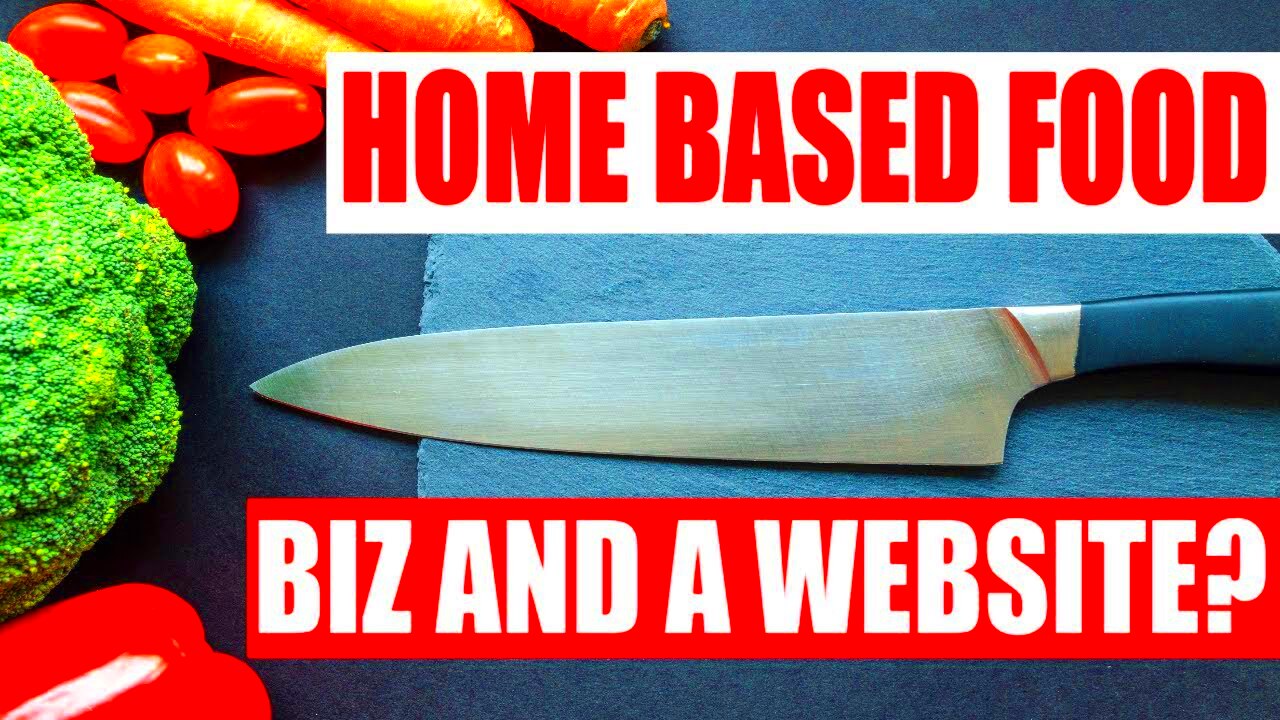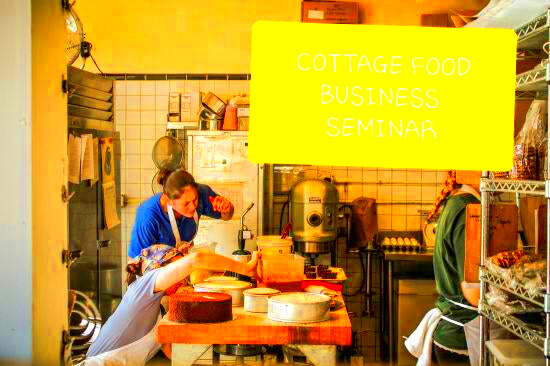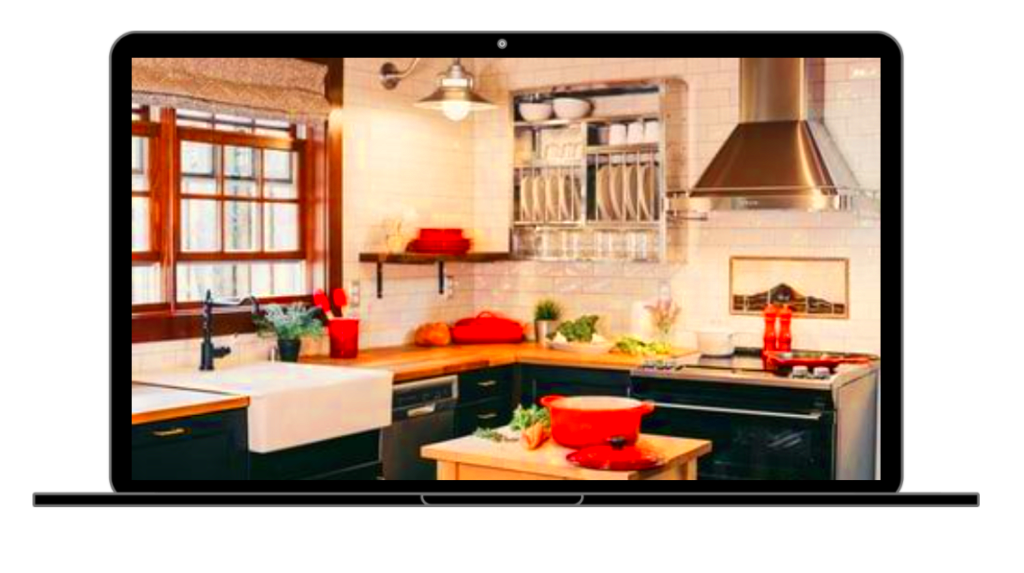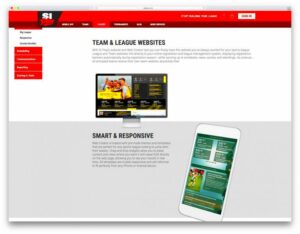Cottage food businesses are a delightful blend of home-cooked goodness and entrepreneurial spirit. They typically involve small-scale food production from one’s home kitchen, often allowing local entrepreneurs to sell homemade goods such as baked items, jams, sauces, and more. This business model not only caters to the growing demand for artisanal, locally produced food but also provides individuals an opportunity to turn their culinary passion into profit.
While the specifics can vary widely by region, what remains consistent is the charm and authenticity that come with these products. Many cottage food operators develop loyal customer bases by offering unique, quality goods that resonate with community values. If you’re thinking about diving into this tasty business world, understanding the nuances of establishing an effective online presence is crucial.
The Importance of an Effective Website

When it comes to running a successful cottage food business, having an effective website is absolutely vital. Here’s why:
- First Impressions Matter: Your website acts as your digital storefront. It’s often the first thing potential customers see, so it needs to reflect your brand’s personality and values.
- Credibility and Trust: A professional-looking website can instill trust. Customers are more likely to buy from a business that has a well-designed site.
- Easy Accessibility: With a website, your business is accessible 24/7. Customers can browse your offerings, place orders, and find essential information anytime they want.
- Showcase Your Products: A website provides the perfect platform to display your products with enticing images and engaging descriptions, allowing you to tell your story.
- Marketing Opportunities: A solid digital presence allows for various marketing strategies, from SEO to social media integration, driving traffic to your site and increasing your reach.
| Feature | Benefit |
|---|---|
| Product Showcase | Highlights your unique offerings |
| Contact Information | Makes it easy for customers to reach you |
| Online Ordering | Facilitates easy purchasing |
| Testimonials | Builds trust through customer feedback |
In short, an effective website is not just a luxury; it’s a necessity for cottage food businesses aiming to thrive and connect with their audience.
Essential Features of a Cottage Food Business Website

Creating a website for your cottage food business is essential for reaching potential customers and building your brand. But what exactly makes a website effective? Here are some essential features that should be on your list:
- Attractive Design: Your website should reflect the warmth and charm of your cottage food offerings. Use appealing colors, high-quality images, and a layout that makes navigation easy.
- User-Friendly Navigation: Visitors should be able to find what they’re looking for without frustration. Organize your menu into clear categories, such as “Products,” “About Us,” “Order Now,” and “Contact.”
- Detailed Product Descriptions: Each product should include a mouth-watering description, ingredients, pricing, and sizes. This helps customers make informed choices and encourages them to order.
- Online Ordering System: If you want to streamline service, consider integrating an online ordering platform. This makes it convenient for customers and reduces back-and-forth communication.
- Mobile Responsiveness: Many customers will browse your site on mobile devices, so ensure your website is mobile-friendly. A responsive design adapts easily to any screen size.
- Contact Information: Make sure your contact details, including phone number and email, are easy to find. Including a contact form can simplify communications even further.
- Social Media Links: If you are active on social media, add links to your profiles. This encourages visitors to connect with you and follow your business journey.
- Blog Section: Include a blog to share recipes, cooking tips, or stories behind your cottage food business. This engages visitors and provides SEO benefits.
- Customer Testimonials: Showcase glowing reviews from satisfied customers. Positive feedback builds trust and can persuade new visitors to make a purchase.
Incorporating these features will create a robust online presence that effectively represents your cottage food business and enhances customer interaction.
Choosing the Right Domain and Hosting

So, you’ve got your website layout and essential features planned—now it’s time to get your site online! This begins with two crucial components: your domain and hosting. Let’s break it down:
Choosing the Right Domain
Your domain name is like your online storefront address, so it’s vital to choose one that is memorable and relevant. Here are some tips:
- Keep it Short and Simple: A shorter name is easier to remember and type. Avoid complicated words or excessive length.
- Incorporate Keywords: If possible, include keywords related to your cottage food business. This can help in SEO, making it easier for potential customers to find you.
- Use a .com Extension: While there are many domain extensions available, .com is still the most recognized and trusted. It adds a level of professionalism.
Selecting the Right Hosting Service
Next up is web hosting, which is where your website lives. Here’s what to look for:
- Reliability: A reliable hosting provider ensures your site is always accessible. Look for services with a good uptime percentage (ideally 99.9%).
- Customer Support: Choose a host that offers 24/7 support. If something goes wrong, you want help on hand, regardless of the time.
- Scalability: As your business grows, your hosting needs may change. Opt for a hosting service that allows you to upgrade easily without downtime.
- Security Features: Your website’s security is essential, especially if you’ll have an online shop. Look for features like SSL certificates and regular backups.
By carefully selecting your domain and hosting service, you’ll set a solid foundation for your cottage food business’s online presence, making it easy for customers to discover and engage with your delicious offerings.
Design Elements for a Professional Look
When it comes to your cottage food business, first impressions matter. The design elements of your website play a crucial role in how potential customers perceive your brand. A professional-looking website not only builds credibility but also enhances user experience. Here are some key design elements to consider:
- Color Scheme: Choose a color palette that reflects your brand identity. Warm, inviting colors can evoke a sense of homeliness, while brighter colors can attract attention. Be consistent with your colors across all pages.
- Typography: Select easy-to-read fonts that align with your brand persona. Mixing font styles can add visual interest, but aim for no more than two or three different typefaces.
- High-Quality Images: Use professional photos of your products. Bright, appealing images can make your offerings look irresistible. Consider including images of your kitchen or your food preparation process to give a personal touch.
- Navigation: Ensure your site is easy to navigate. Use intuitive menus so visitors find what they’re looking for with ease. A well-organized layout reduces bounce rates dramatically.
- Responsive Design: Optimize your website for mobile devices. A large portion of users browse on their phones, so your site needs to look great on all screen sizes.
- Call-to-Action Buttons: Design clear and compelling buttons prompting action, like “Order Now” or “Contact Us.” The color and placement of these buttons should draw the eye.
Combining these elements thoughtfully can create a website that not only attracts visitors but also encourages them to explore and ultimately purchase your cottage food products.
Content That Engages Your Audience
Once you have the design nailed down, the next step is filling your website with engaging content. Good content is more than just words on a page; it’s your chance to connect with your audience and showcase your unique offerings. Here are some tips on creating compelling content for your cottage food website:
- Engaging Storytelling: Share your journey—how you started your cottage food business, what inspires your recipes, and the story behind each product. Personal stories create a relatable connection with your customers.
- Descriptive Product Descriptions: For each item in your online store, write detailed descriptions that include ingredients, taste profiles, and what makes your product special. Use sensory language that makes customers want to try your offerings.
- Blogs and Articles: Consider adding a blog section where you can share recipes, tips for home bakers, or insights into food sourcing. This not only engages users but can improve search engine optimization (SEO).
- Customer Testimonials: Including reviews and testimonials from satisfied customers can greatly boost credibility. Showcase stories that highlight how your food products made special occasions even more memorable.
- Clear Calls-to-Action: Guide users on what to do next—whether it’s signing up for a newsletter, following you on social media, or making a purchase. Each page should encourage some form of interaction.
- Visual Content: Don’t just rely on text; include videos or infographics. A behind-the-scenes video of your cooking process or infographics about the benefits of homemade food can grab attention.
By focusing on engaging content, you create a vibrant online presence that fosters customer loyalty and encourages repeat visits to your cottage food website. Consistently updating your content makes sure your audience will always have a reason to return.
7. Utilizing E-commerce Tools for Sales
In the world of cottage food businesses, having an effective online presence isn’t just a nice-to-have; it’s a must. E-commerce tools can really bridge the gap between your delicious creations and hungry customers. With the right tools, you can set up an online shop that feels both personal and professional, making it easy for customers to browse and purchase your products. So, what e-commerce tools should you consider?
- Online Marketplaces: Platforms like Etsy, Amazon Handmade, or even local marketplaces can help you reach a wider audience.
- Website Builders: Tools like Shopify or WooCommerce allow you to create a stunning online store tailored to your unique brand.
- Payment Processors: Services like PayPal, Stripe, or Square make transactions seamless and secure for both you and your customers.
- Inventory Management: Tools like TradeGecko can help you keep track of stock levels, so you never run out of that popular blueberry jam.
- Shipping Solutions: Integrate with shipping providers like ShipStation or USPS for easy label creation and tracking.
Additionally, don’t forget about customer engagement! Tools like email marketing platforms (MailChimp or ConvertKit) and social media schedulers (Buffer or Hootsuite) can keep your customers excited and informed about new products, special offers, or seasonal items. Remember, the key to successful e-commerce is not just selling a product, but building relationships with your customers!
8. Search Engine Optimization (SEO) Strategies
When it comes to your cottage food business website, having a stunning design and delicious products isn’t enough; you need to be found! Enter SEO—Search Engine Optimization. This set of strategies helps your website rank higher in search engine results, making it easier for potential customers to discover you. So how do you harness the power of SEO?
Here are some essential strategies to get started:
- Keyword Research: Use tools like Google Keyword Planner to find out what terms your customers are searching for. Incorporate these keywords naturally into your website content.
- High-Quality Content: Create engaging blog posts, recipes, or tips related to your products. The more helpful and relevant your content, the better your site will rank!
- Meta Tags: Optimize your title tags and meta descriptions for every page. Make them compelling to improve your click-through rate.
- Mobile Optimization: Ensure your website is mobile-friendly. A significant portion of online shopping is done on mobile devices, so make it easy for your customers!
- Local SEO: Since cottage food businesses often serve local areas, list your business on Google My Business and other local directories to attract nearby customers.
Over time, these strategies can drive more traffic to your site and lead to increased sales. Remember, SEO is not a one-time task; it’s an ongoing effort that pays off. So, be patient and consistent, and you’ll see the magic unfold!
Social Media Integration and Marketing
In today’s digitally connected world, social media has become a crucial component for any business, including cottage food ventures. Integrating social media into your website isn’t just beneficial; it’s essential for reaching your target audience, building a community, and promoting your delicious creations.
First off, consider the platforms that resonate with your audience. Facebook, Instagram, and Pinterest are fantastic avenues for visual storytelling. You can share mouth-watering photos of your baked goods or specialty preserves, highlighting the craftsmanship that goes into your products. An integrated feed showcasing your latest posts can keep your website fresh and engaging.
Engagement is key. Here are a few strategies to effectively use social media:
- Share User-Generated Content: Encourage your customers to post photos using your products and tag your business. You can even feature their posts on your website.
- Run Promotions and Contests: Create buzz by offering exclusive discounts or running contests. These promotions can drive traffic to both your website and your social media profiles.
- Utilize Hashtags Wisely: Research trending hashtags relevant to your niche. This can expand your reach beyond just followers.
- Leverage Stories and Live Videos: Showcase the behind-the-scenes preparation of your products, giving customers a personal touch.
Lastly, remember to analyze your metrics. Tracking which posts lead to higher engagement or conversions can help you refine your strategies for the future. So, get social and let your cottage food business thrive!
Compliance with Local Regulations
When running a cottage food business, navigating the maze of local regulations can feel overwhelming. However, knowing and complying with laws is vital to operate your business legally and avoid potential fines or shutdowns. Each state has its own set of rules, so taking the time to understand your local laws is essential.
Start by researching your state’s guidelines. Most states have a cottage food law that defines what types of foods can be sold, labeling requirements, and where they can be sold (online, farmer’s markets, etc.). Here are some common elements to consider:
- Allowed Products: Check which items are permitted. Many states allow baked goods, jams, and dried goods, but there may be restrictions on perishable items.
- Licensing Requirements: You may need to apply for a specific cottage food license or permit. Ensure you know what paperwork is necessary.
- Labeling Requirements: Your products usually need to include specific information on their labels, such as your business name, address, ingredients, and allergen information.
- Sales Venues: Determine where you can sell. Some states only allow sales from home or at local farmer’s markets.
Additionally, it’s advisable to consult local health departments to ensure your kitchen meets safety regulations. You can also join local cottage food groups or forums to stay updated on the latest changes in legislation. By prioritizing compliance, you build trust with your customers and pave the way for a successful and legally sound cottage food business.
Case Studies: Successful Cottage Food Websites
When it comes to building an effective website for your cottage food business, learning from those who have already succeeded can provide invaluable insights. Let’s take a closer look at some standout examples that have effectively leveraged their online presence to thrive in the cottage food market.
1. Sweet Delight Bakery
Sweet Delight Bakery offers a charming website that embodies the rustic vibe of its offerings. The homepage features vibrant images of their baked goods, paired with a user-friendly layout. They’ve incorporated an e-commerce platform that allows customers to easily place orders and customize their selections. A dedicated blog provides tips on baking and highlights seasonal recipes, keeping their audience engaged.
2. Garden Goodies Jam
Garden Goodies Jam has crafted a website that tells the story of their organic ingredients. The design is visually appealing with a focus on storytelling. Customers can learn about the sourcing of fruits used in their jams through engaging content. Their site includes an informative FAQ section addressing common queries about product shelf life and usage. They also utilize social media integration to connect with customers and embrace feedback.
3. Little Pie Co.
Little Pie Co. takes a modern approach with a clean, minimalist design that showcases their delicious pies. They feature high-quality photography that makes each pie look mouth-watering. Their website includes a recipe section that encourages visitors to try their hand at pie-making, alongside a subscription option for monthly pie deliveries—perfect for the loyal customer!
These case studies highlight that having an engaging, informative, and visually appealing website is key. With elements like stunning visuals, easy navigation, and customer interaction, these cottage food businesses have successfully carved out a niche for themselves online.
Conclusion: Building Your Online Presence
In today’s digital age, establishing a strong online presence isn’t just beneficial—it’s essential for the success of your cottage food business. As the marketplaces become increasingly saturated, differentiating yourself through a well-crafted website can mean the difference between being seen or overlooked.
Start by defining your brand. Consider these points:
- Know Your Audience: Identify who your customers are and what they are looking for.
- Create Quality Content: Use high-resolution images and engaging descriptions that tell your story.
- Optimize for SEO: Invest time in search engine optimization to ensure you appear in relevant searches.
Acknowledging the importance of social media can further amplify your reach. Engage with your audience through platforms like Instagram and Facebook, where visuals play a crucial role in attracting customers. Share behind-the-scenes content, customer testimonials, and recipe ideas, keeping your audience connected and interested.
Finally, don’t underestimate the power of analytics. Track your website traffic and customer engagement metrics to understand what works and what doesn’t. This will not only help you make informed decisions but also allow you to fine-tune your website and marketing strategies over time. Remember, building your online presence is an ongoing journey, and each step taken is a step closer to achieving your business goals!



